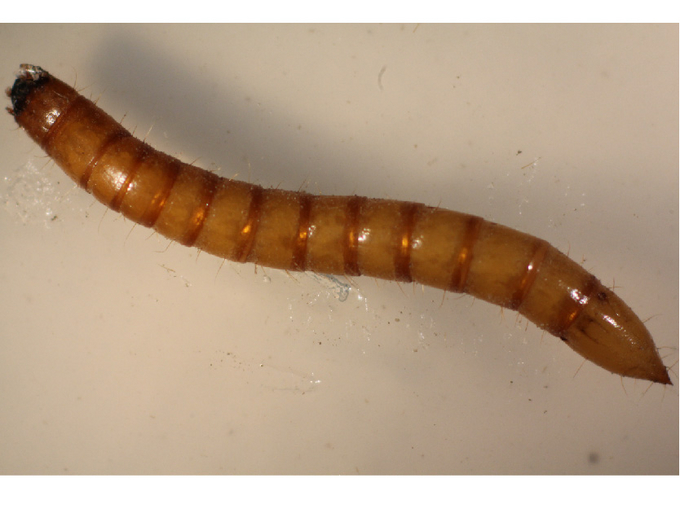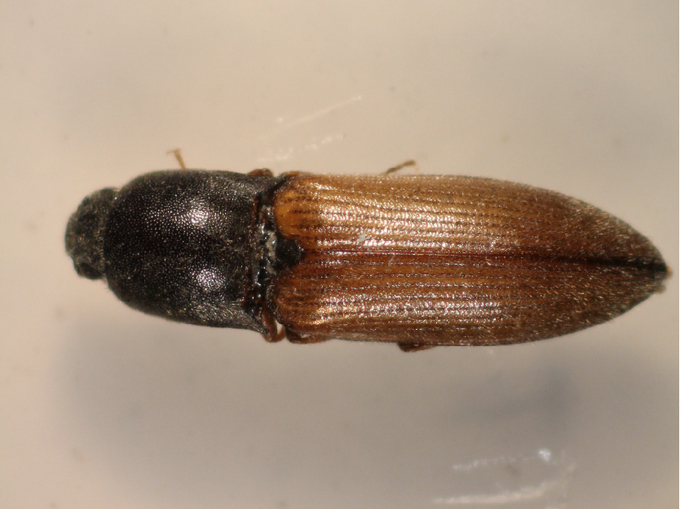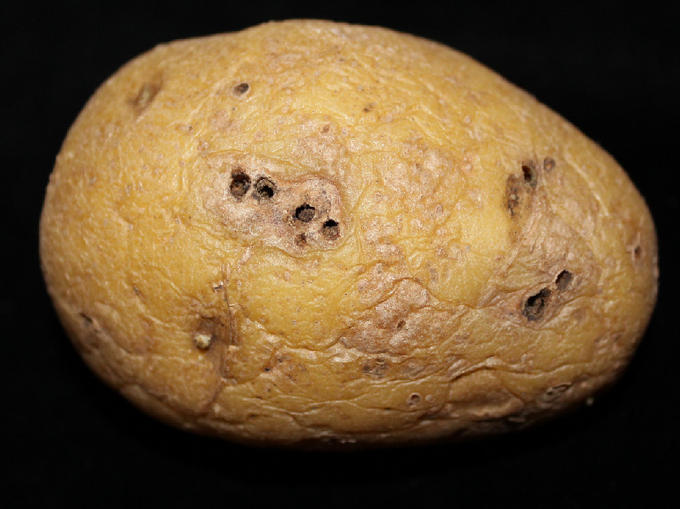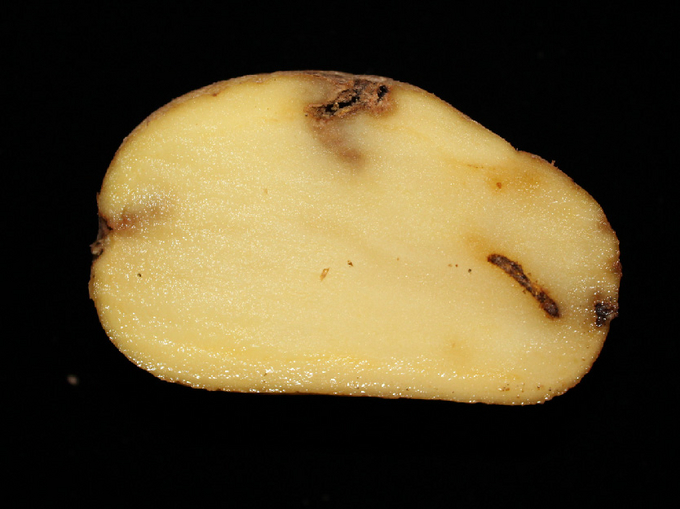Wireworm - Click beetle
Agriotes sp.
Appearance
The larvae freshly hatched from the eggs are initially only 1.5 mm long and whitish in color. Within a few days, the cuticle of the wireworms hardens and takes on the golden yellow color typical of Agriotes species. Depending on the species, wireworms go through eight to 14 molts and grow up to two centimeters long before they pupate and develop into beetles.
The beetles are usually inconspicuous in color and have an elongated body shape. They are named after their ability to use their jumping apparatus to catapult themselves from the dorsal position into the air in order to land back on their little legs.


Biology
The female beetles lay their translucent eggs shallowly in the soil. The eggs are laid in clusters and not evenly distributed across the field. Overgrown areas are favoured over bare soil. The larvae hatch after about four weeks. The larvae take several years to develop, passing through different larval stages depending on the environmental conditions. They repeatedly go through longer resting phases during which they do not feed.
To feed, the plant material is crushed with the mouthparts and the resulting food pulp is sucked up. The larvae only travel short distances in the soil, but are able to move into deeper soil layers if the environmental conditions require it.
Damage symptoms
During the feeding process, the roots are eaten from the outside, but in massive plant parts such as beets, tubers and similar storage organs, wireworms also create feeding tunnels of one or a few millimeters in diameter, in which they can stay for a certain time.


Economic importance
In individual years, damage of varying severity was reported, with dry-hot years being more likely to cause damage. The severity of the damage caused depends on the plant part infested, the time of infestation, and the number of older wireworms in the soil.
In the case of pure root damage, seedlings such as corn are most severely affected, while wireworms in cereals play a lesser role or are often not even noticed. Damage is most severe when crops themselves are infested, as in potato, carrot, onion, asparagus or radish.
Prevention and control
- Information on the currently approved plant protection products in Austria against wireworms can be found in the list of plant protection products approved in Austria.
- Crop rotation measures have so far proven to have only limited success, since wireworms are very polyphagous and can live on a wide variety of host plants. The only consensus is that there is a particularly high risk for the following crop after grassland has been turned over - this also applies to a lesser extent to fallow land.
- Intensive tillage reduces infestation, but harms soil life and promotes soil erosion. Shallow tillage, on the other hand, which targets the sensitive stages in the life cycle of wireworms and must therefore be carried out at an optimized time, is considered a possible sustainable measure against the pest. Sensitive developmental stages are egg clutches and young larvae, but also beetle pupae, which remain in the soil until the adult beetles swarm out.
- The use of the insect pathogenic fungus Metarhizuim anisopliae is in the experimental stage.
- Experiments on resistance of potato varieties to wireworms showed that resistance was related to the content of glycoalkaloids (solanine), which, however, are classified as toxic to humans. In practice, however, cultivar differences in susceptibility to wireworm damage in potatoes are also consistently observed and appear to be independent of the solanine content of the tubers. The causes of these differences have not yet been adequately investigated.
Promising measures without the use of active substances include, above all, tillage at the time of egg laying, since the eggs and the freshly hatched larvae can be controlled by the mechanical disturbance and by desiccation. More accurate information on the flight of individual species is provided by the use of pheromone traps for the most common Agriotes species. Monitoring to survey the flight times of the pest species occurring in Austria has been conducted since 2019. The collected data can be seen on the page of the Austrian Plant Protection Warning Service.
Specialized information
Biological control
Several research studies have found naturally occurring antagonists such as ground beetles and various insect pathogenic fungi(Metarhizium brunneum, Entomophthora elateridiphaga,...), but it is still unclear whether they are sufficiently effective against the pest. Work on biological control with the fungus Metarhizium brunneum is being done at some institutions. Preliminary results indicate some potential of the fungus against wireworms. In contrast, previous results with insect pathogenic nematodes or with the fungus Beauveria sp. have not been promising.
Research projects
Last updated: 28.11.2025
automatically translated